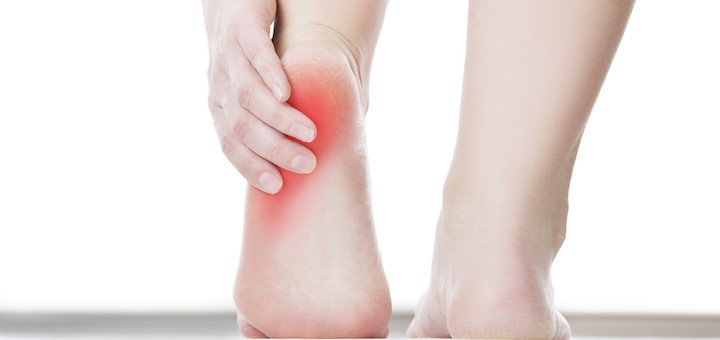In the UK, more than 1.5 million people get treatment for Plantar Fasciitis every year. Plantar Fasciitis is the common condition of heel pain, which can be severe in some cases. Most people are familiar with this condition and have been through it. However, many people probably have never heard about it. in this article, we will give you detailed information about the condition known as Plantar Fasciitis. We will discuss its symptoms, causes and finally the treatment.
What is Plantar Fasciitis?

Plantar fasciitis is a condition of the thick band of tissue present at the bottom of the foot that runs from the heel to the toes. This tissue is called the plantar fascia. Heel spurs are often the results of plantar fasciitis, which is a bony growth underneath the foot. This condition is common in people between the ages of 40 and 60. The initial strain on the fascia is further affected by the micro-tears, which can occur over time. In the morning, the pain can be severe and sharp making the first few steps difficult. The common Plantar fasciitis treatment UK is acupuncture and physical therapy.
101 Facts about Plantar Fasciitis
- The arch of your foot is supported by the plantar fascia, which absorbs shock when you walk.
- The condition of plantar fasciitis cause stabbing pain on the bottom of your foot.
- This condition is common in runners
- Plantar fasciitis is the common reason for heel pain
- Chronic plantar fasciitis can lead to plantar fasciitis (repeated stress on plantar fascia).
- Walking right after waking up might be tough due to discomfort.
- X-ray testing can detect plantar fasciitis if a heel spur is present.
- Plantar fasciitis can go away in 6 to 18 months
- Foot stretches and exercises can provide temporary relief.
- Shoe inserts can be effective for foot support.
What are the causes and symptoms of Plantar Fasciitis?

The plantar fascia in the foot is a bowstring shaped tissue that supports the arch and absorbs the shock on the foot. When we walk or run, or wear the wrong fitted shoes, it eventually put strain and too much pressure on the fascia. More than enough pressure can tear the plantar fascia, which causes sharp tingling pain on the bottom of your heel. Repeated stretching and tearing can continue the irritation and inflammation. However, age, work, foot mechanics and exercising are the factors that can increase the risk.
Plantar fasciitis causes extreme foot and heel pain, especially when you take your first few steps in the morning. Standing after sitting for a long time also worsens the pain. Such a condition tends to feel better with activity but gets worsen again after you run or spend a long time on your feet. It can also get worse after you have been motionless for a long time, such as sleeping or working while sitting at your desk.
Risk factors of Plantar Fasciitis
Plantar fasciitis develops without any particular reason. Still, there are a few factors that can increase the risks, including:
- Excess weight or obesity can damage the plantar fascia and make it less able to absorb shock or strain. Up to 70% of patients with plantar fasciitis are overweight. Pregnancy is another common cause of such a condition because of increased weight on feet.
- Frequent walking, running or standing for long hours can put pressure on feet. Such people are more likely to get this condition. some studies have also shown that excessive stretching and tightness of the Achilles can also lead to plantar fasciitis.
- People with foot abnormalities can be at increased risk of plantar fasciitis because their full sole touch the ground when standing. Similarly, very high arches also raise the risk of plantar fasciitis.
- Wearing the wrong shoes won’t support the foot and can cause excessive pressure on the foot, which can result in plantar fasciitis.
- Diabetic patients also have an increased risk of plantar fasciitis.
Plantar Fasciitis Treatment
When visiting the doctor, they will examine the foot and look for the conditions like high arches, tenderness on the bottom, intensified pain while putting pressure, or limited ankle mobility. Depending on the severity of your condition, your doctor will suggest a treatment after checking your medical history. Fortunately, the condition can go away within 6 weeks to 8 weeks without the need for surgery. However, it depends on the severity of pressure or strain on the plantar fascia. Usually, the treatment of plantar fasciitis involves stretching and physical therapy along with steroid injections and anti-inflammatory medicine.
Final words
Like any other medical issue, plantar fasciitis is common and can be treated easily if found on time, if you are experiencing heel or foot pain, which is affecting your walk, you should immediately see your doctor prevent the condition from getting worse.




